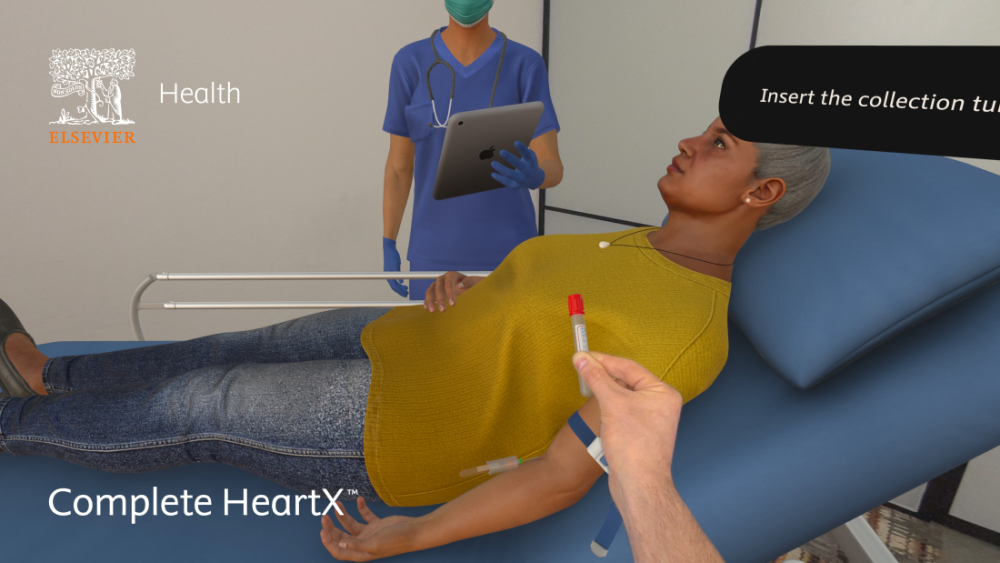A new and immersive way of learning about heart health is tackling bias in medical teaching by putting the spotlight on female heart disease. The symptoms of female heart attacks are often very different from those experienced by males, sometimes confused for things like acid reflux or the flu. Built by Elsevier’s 3D4 Medical team, Complete HeartX wants to make it easier for students and clinicians to recognize female heart attacks.
Human anatomy was long informed by the anatomy and physiology of male bodies, meaning that the medicine built on foundational ideas wasn’t always a good fit for females. In 2022, a new 3D model of female anatomy – the Complete Anatomy by Elsevier model of female anatomy, also built by the 3D4 Medical team – became the most advanced of its kind. Its goal? To improve the management of female patients by delivering teaching materials “for the benefit of every patient” and diversifying medical education. An aim that’s shared by Complete HeartX.
As the first spatial computing app to teach coronary health, Complete HeartX allows users to literally push, pull, and turn the heart in any direction to examine blood flow and blockages. Clinical simulations mean students can learn about everything from anatomy to blood draws in a lifelike but safe rehearsal space, creating a unique learning experience.
We spoke to Irene Walsh, Sr. Director of Product & Education Design at Elsevier Health, to find out more about how Complete HeartX is helping to tackle medical bias. It’s a topical conversation for February, which is marked annually as American Heart Month.
How is Complete HeartX tackling medical bias?
Irene Walsh: Heart disease is one of the leading causes of death globally in women and that includes in the US and UK. As we know, heart disease can lead to heart attack (myocardial infarction). For these reasons, in Complete HeartX, we chose to spotlight the condition of myocardial infarction and how it can be experienced by a female patient.
Female patients having a myocardial infarction are more likely to have more subtle symptoms, which are often confused as less life-threatening conditions such as the flu, acid reflux, or simply aging. We see that this can result in delayed medical intervention. At Elsevier Health we’re committed to addressing this gender inequity, and so we took the opportunity to spotlight the experience of a female patient with heart attack symptoms, and empower the public with this knowledge.
What’s unique to Complete HeartX as an educational tool?
IW: Complete HeartX opens up a new way of learning for students, where within one single experience, they can directly connect the theory of the anatomy and physiology that they learn, to the practice of a clinical skill. Students can fully immerse themselves in the incredibly detailed structures of the heart, and even walk inside, to fully discover each part and its function through spatial computing.
It’s the first app of its kind for coronary education. It also pulls together learning material from some of Elsevier’s best-known and industry leading products, such as Gray’s Anatomy textbook, Osmosis videos and Complete Anatomy models in one experience, to provide students with a truly multi-modal experience. This enables them to deep dive into topics as well as hit the key learning objectives all at once.

Students can take blood in lifelike simulations.
Image credit: Complete HeartX
Do you have a favorite feature of the model?
IW: I absolutely love the simulation section where you can learn the “why” behind each step of the process of taking blood, because it’s helpful on so many levels – as a patient it’s a real light-bulb moment to “peek behind the curtain” and understand why certain actions are taken, and as an aspiring healthcare provider, you get to learn the key steps of that skill.
Why is diversifying medical education so important?
IW: Medical education content has historically been predominantly male-centred, from male bodies, to illustrations, and human models. This focus on the male can set a bias in the early career of medical students, which we believe can go on to impact the healthcare outcomes of female patients down the line.
Given we are one of the main providers of medical education materials and products, at Elsevier, we see the opportunity to leverage our reach and offer alternative learning pathways to the medical education community, to put diverse resources into their hands that counter this bias right from day one of medical school. This is the latest step we are taking to diversify medical education.
We most recently did it by creating the first 3D female anatomy model in medical learning with Complete Anatomy followed by Complete Anatomy’s diverse skin tone model, the world’s most diverse offering of skin tone options in medical learning. Up until then medical texts globally were based on the white, European male model.
Source Link: World-First Spatial Computing Heart Model Spotlights Female Heart Attack Symptoms